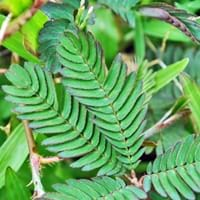Life Span
Perennial
Perennial
Type
Vegetable
Tender Perennial
Origin
Hybrid origin, Mexico, Central America, South America
Brazil
Types
Bigleaf hydrangea, Hortensia, Smooth hydrangea, Oakleaf hydrangea, Annabelle
Not Available
Number of Varieties
Not Available
Habitat
Forest edges, Hillside, Woods
Cropland, Forests, Pastures
USDA Hardiness Zone
11-15
11-15
AHS Heat Zone
12*1
Not Available
Habit
Vining/Climbing
Spreading
Flower Color
Yellow
Pink, Rose, Lavender
Flower Color Modifier
Bicolor
Bicolor
Leaf Color in Spring
Green, Dark Green
Green, Gray Green
Leaf Color in Summer
Green, Dark Green
Green, Gray Green
Leaf Color in Fall
Green, Dark Green
Green, Gray Green
Leaf Color in Winter
Green, Dark Green
Light Green
Leaf Shape
Oblovate
Pinnate
Plant Season
Spring, Summer, Fall
Spring, Summer, Fall, Winter
Sunlight
Full Sun
Full Sun, Partial Sun, Partial shade
Type of Soil
Loam, Sand
Loam
The pH of Soil
Neutral
Neutral
Soil Drainage
Well drained
Well drained
Bloom Time
Indeterminate
Early Summer, Summer, Late Summer
Tolerances
Drought
Drought
Where to Plant?
Container, Ground
Ground, Pot
How to Plant?
Seedlings, Stem Planting
Seedlings
Plant Maintenance
Medium
Medium
Watering Requirements
Not Available
Requires regular watering
In Summer
Average Water
Lots of watering
In Spring
Moderate
Moderate
In Winter
Average Water
Average Water
Soil Type
Loam, Sand
Loam
Soil Drainage Capacity
Well drained
Well drained
Sun Exposure
Full Sun
Full Sun, Partial Sun, Partial shade
Pruning
Remove damaged leaves, Remove dead branches, Remove dead leaves
Remove damaged leaves, Remove dead branches, Remove dead leaves
Fertilizers
All-Purpose Liquid Fertilizer
All-Purpose Liquid Fertilizer
Pests and Diseases
Red blotch
bees, Wasps
Plant Tolerance
Drought
Drought
Flower Petal Number
Single
Single
Fragrant Bark/Stem
Yes
No
Foliage Texture
Medium
Fine
Foliage Sheen
Matte
Matte
Evergreen
Semi-Evergreen
No
Attracts
Bees, Flies
Insects
Allergy
Chest tightness, Diarrhea, Dizziness, Nausea, Vomiting
allergic conjunctivitis, Hay fever
Aesthetic Uses
Not Available
Beautification, Showy Purposes
Beauty Benefits
Not Available
Not Available
Edible Uses
Not Available
No
Environmental Uses
Air purification
Air purification
Medicinal Uses
Fever, Kidney problems, Urinary tract problems
Antivinous, Diarrhea, Fertility, Piles, Stomach Ulcers
Part of Plant Used
Flowers, Root
Leaves, Root
Other Uses
Not Available
Used for its medicinal properties
Used As Indoor Plant
Not Available
Yes
Used As Outdoor Plant
Yes
Yes
Garden Design
Edible, Herb / Vegetable
Container, Groundcover, Hanging Basket, Mixed Border, Tropical
Botanical Name
LYCOPERSICON esculentum var. cerasiforme 'Juliet'
MIMOSA pudica
Common Name
Juliet Tomato
Action Plant, Sensitive Plant, Touch-Me-Not
In Hindi
Hydrangea
छुई मुई
In German
Hortensie
Berühre mich nicht
In French
Hortensia
Balsamine
In Spanish
Hortensia
No me toques
In Greek
υδραγεία
Αγγίξτε-me-not
In Portuguese
Hortênsia
Não me toque
In Polish
Hortensja
Niecierpek
In Latin
Hibiscus
Palpate Me, non-
Phylum
Not Available
Magnoliophyta
Class
Not Available
Magnoliopsida
Order
Not Available
Geraniales
Family
Solanaceae
Fabaceae
Genus
Not Available
Impatiens
Clade
Not Available
Angiosperms, Eudicots, Rosids
Tribe
Not Available
Not Available
Subfamily
Not Available
Not Available
Number of Species
Not Available
Not Available
Difference Between Juliet Tomato and Touch-me-not
If you are confused whether Juliet Tomato or Touch-me-not are same, here are some features about those plants to help you choose better. Many people think that these two plants have the same characteristics, but one can see Juliet Tomato and Touch-me-not Information and learn more about it. Fertilizers required for proper growth of Juliet Tomato are All-Purpose Liquid Fertilizer, whereas for Touch-me-not fertilizers required are All-Purpose Liquid Fertilizer. Hence, one should know the basic difference between Juliet Tomato and Touch-me-not if you are planning to have them in your garden to enhance its beauty.
<
Flowering PlantsImportance of Juliet Tomato and Touch-me-not
Want to have the most appropriate plant for your garden? You might want to know the importance of Juliet Tomato and Touch-me-not. Basically, these two plants vary in many aspects. Compare Juliet Tomato and Touch-me-not as they differ in many characteristics such as their life, care, benefits, facts, etc. Every gardener must at least have the slightest clue about the plants he wants to plant in his garden. Compare their benefits, which differ in many ways like facts and uses. The medicinal use of Juliet Tomato is Fever, Kidney problems and Urinary tract problems whereas of Touch-me-not is Antivinous, Diarrhea, Fertility, Piles and Stomach Ulcers. Juliet Tomato has beauty benefits as follows: Not Available while Touch-me-not has beauty benefits as follows: Not Available.
Compare Facts of Juliet Tomato vs Touch-me-not
How to choose the best garden plant for your garden depending upon its facts? Here garden plant comparison will help you to solve this query. Compare the facts of Juliet Tomato vs Touch-me-not and know which one to choose. As garden plants have benefits and other uses, allergy is also a major drawback of plants for some people. Allergic reactions of Juliet Tomato are Chest tightness, Diarrhea, Dizziness, Nausea and Vomiting whereas of Touch-me-not have allergic conjunctivitis and Hay fever respectively. Having a fruit bearing plant in your garden can be a plus point of your garden. Juliet Tomato has showy fruits and Touch-me-not has no showy fruits. Also Juliet Tomato is not flowering and Touch-me-not is not flowering . You can compare Juliet Tomato and Touch-me-not facts and facts of other plants too.

